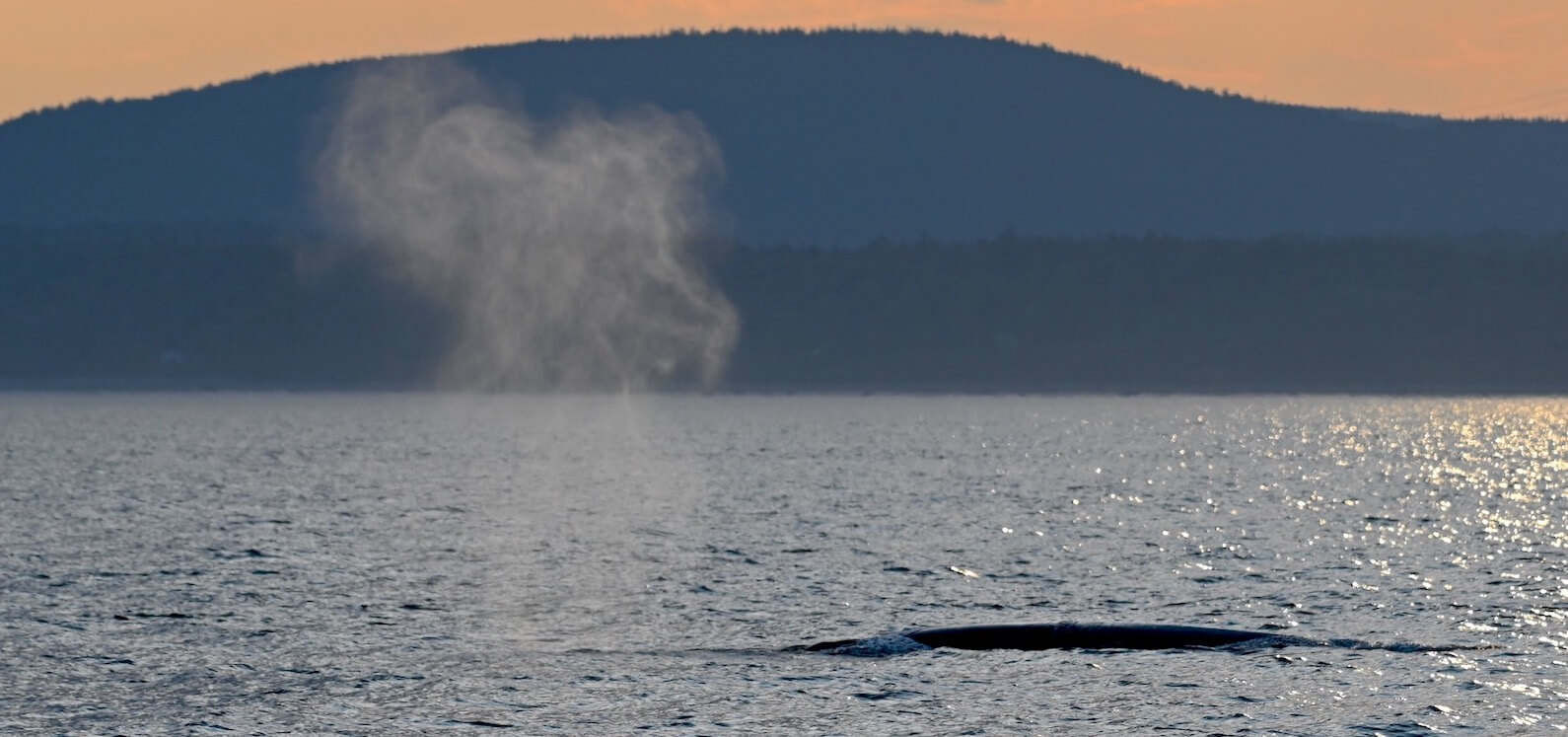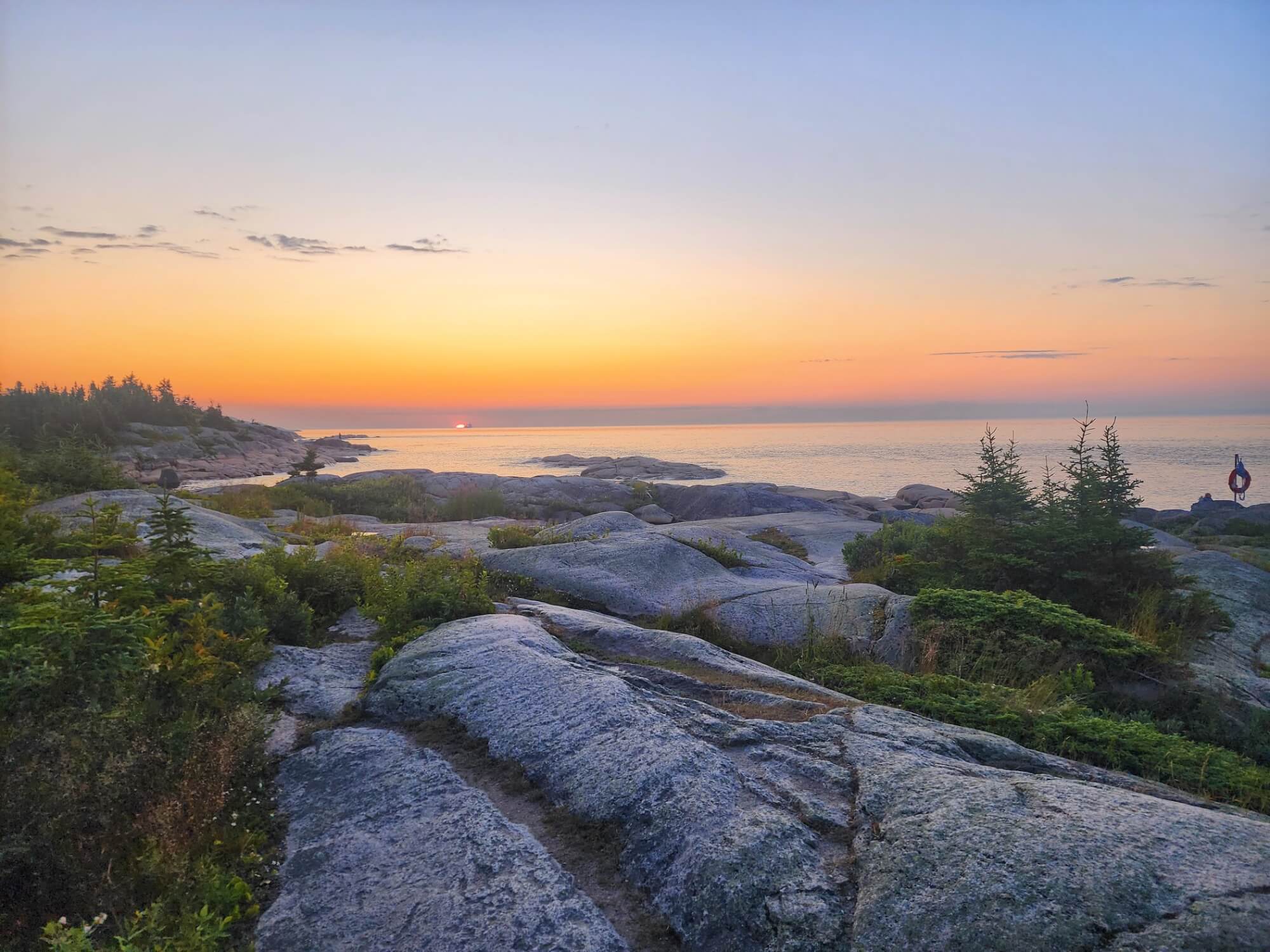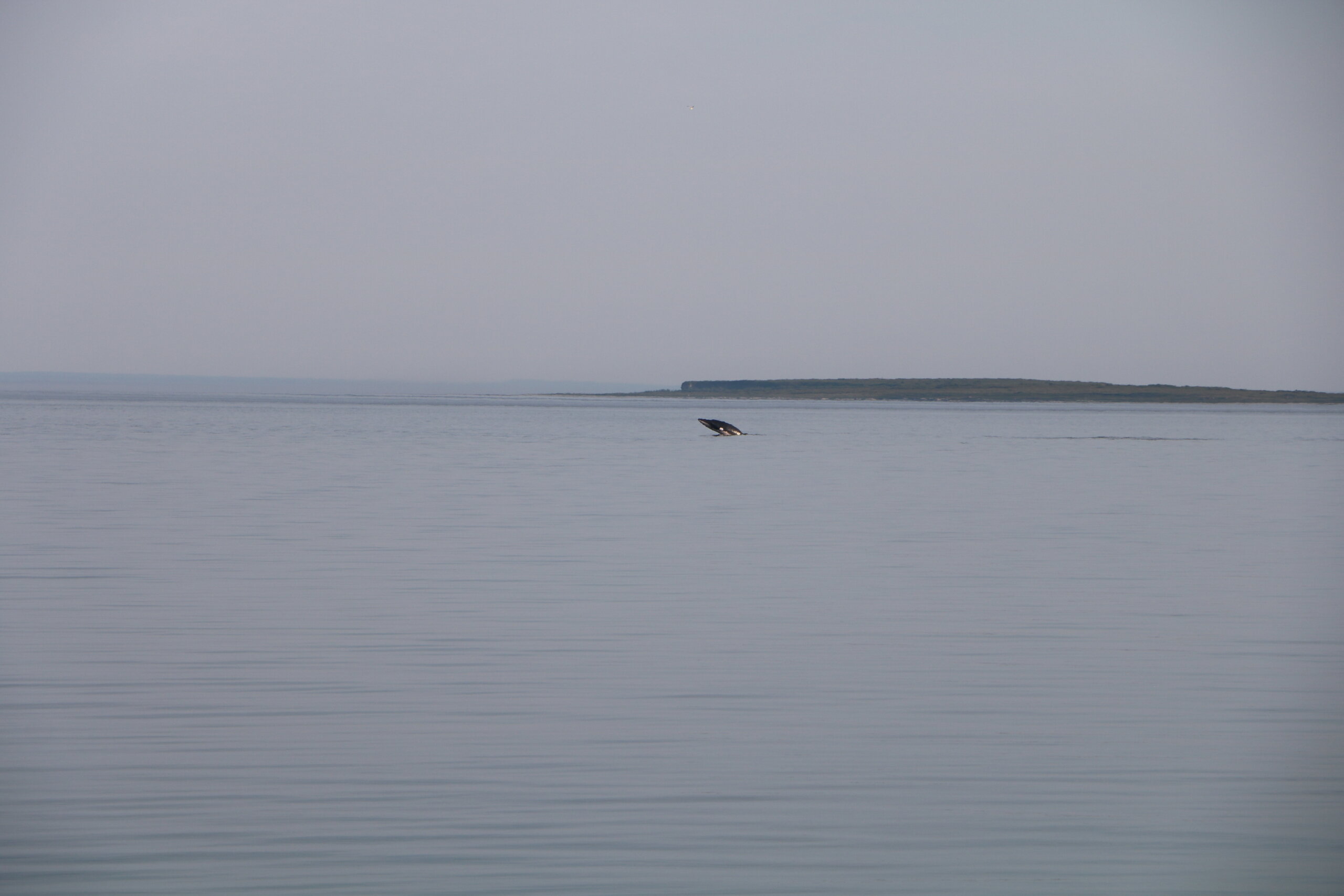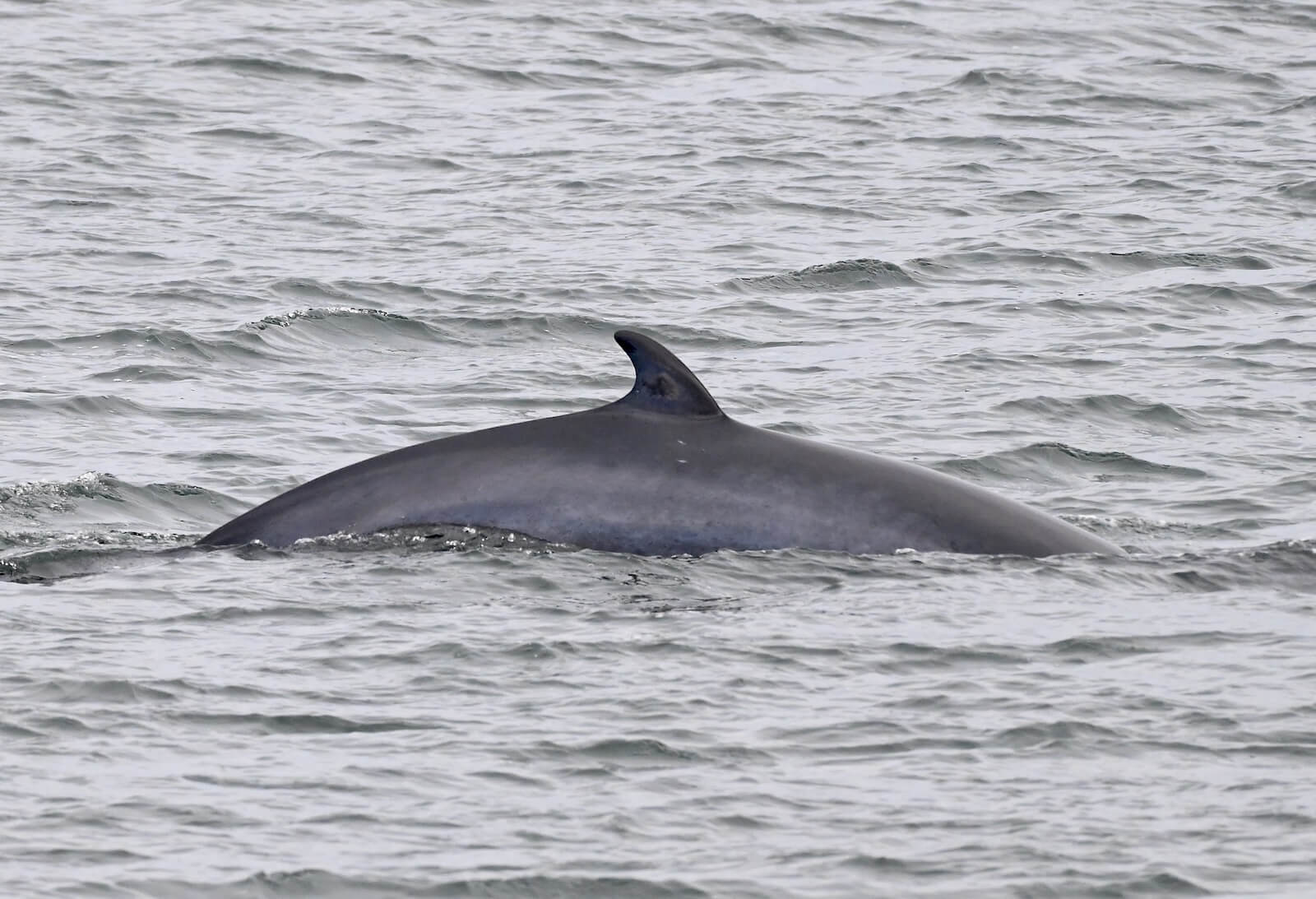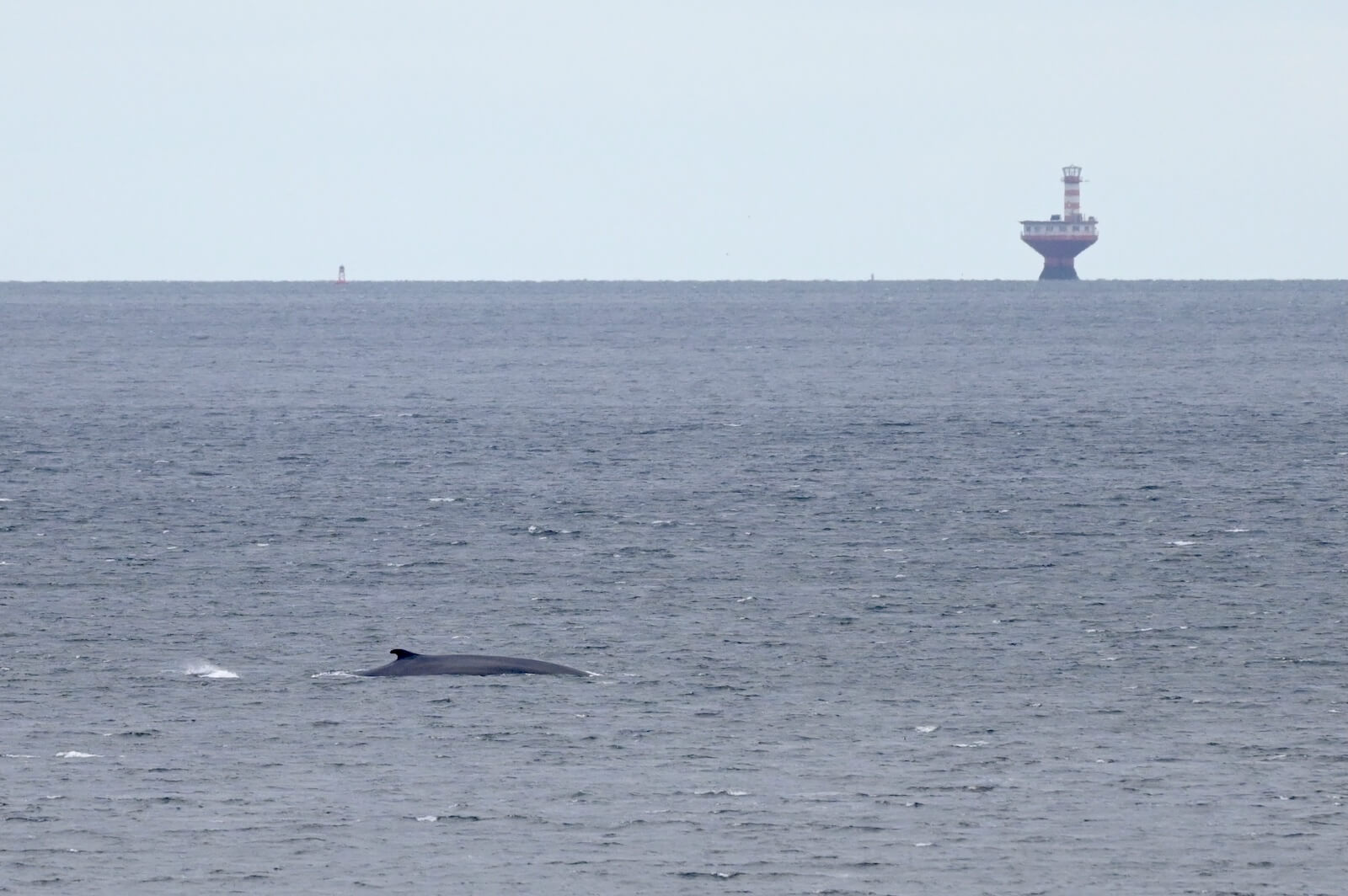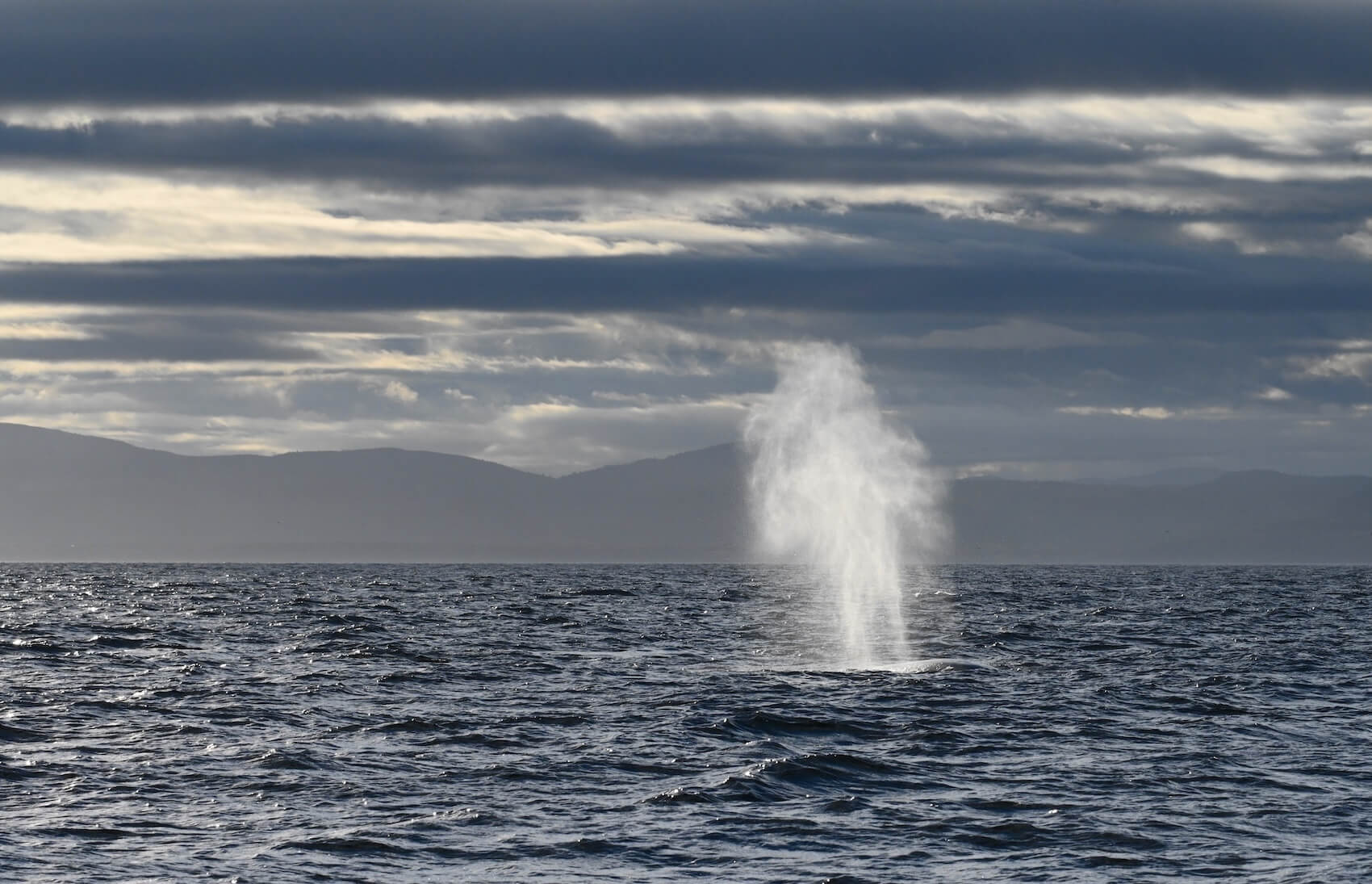Even though they are one of the 13 cetaceans that frequent the St. Lawrence, killer whales are rather rare in the region. However, a Blanc-Sablon resident was lucky enough to spot one near the coast this week! Elsewhere in the gulf and estuary, stories abound of breaching minke whales, belugas in a landscape brimming with life, and large spouts against the backdrop of the rising Sun.
Enigmatic killer whales
It is possible to see killer whales in the St. Lawrence, and in recent years, they have occasionally turned up in the waters off Blanc-Sablon. This past week, these cetaceans were seen near Île-au-Bois and the marina of this Côte-Nord village.
Farther west, the most recent killer whale sighting by the Mingan Island Cetacean Study (MICS) dates back to 2007, while the first one was recorded in 1983. Large groups of around fifty individuals have reportedly already been observed near Blanc-Sablon, while about ten were seen in the Mingan sector in 1995.
The northwest Atlantic, eastern Arctic population of killer whales is small and scattered. Scientists estimate that at least 160 killer whales roam the waters of the Gulf of St. Lawrence, Newfoundland, and Labrador, though actual figures may be much higher. Furthermore, the population may be divided into three ecotypes, each with its own dietary preferences. Research has revealed high contamination rates for killer whales, which are at the top of the food chain.
In the estuary, the Whales Online team often receives reports of killer whales… which ultimately turn out to be minke whales! Sometimes it’s hard to tell! When minke whales feed at the surface, the sharp tip of one of their tail lobes sometimes sticks out, which looks strikingly similar to the dorsal fin of a killer whale. Their manoeuvres sometimes also reveal a portion of their black back and white belly, as well as their “mitten,” which bears an uncanny resemblance to the eye patch of a killer whale.
When anecdotes turn into memories
How do you know you’re living the “good old days” before they come to an end? Maybe when you have some great whale-watching anecdotes to share!
Let’s plunge into some of this week’s stories from across the estuary and gulf.
A Saint-Siméon resident was lucky enough to spot “two small herds of belugas last Sunday, including four blue whales, five small porpoises, and seals!” As for belugas, the French term bleuvet refers to second-year individuals with bluish-grey skin.
In Baie-Sainte-Catherine, one marine mammal enthusiast spotted a few white whales. “On Sunday, my family and I observed some belugas well off the coast of Pointe-Noire, then, from the ferry, there was a nice little group that seemed to be coming out of the fjord.” A few days later, at Cap de Bon-Désir, two grey seals and a harbour seal poked their heads through the fog.
“On Saturday at dawn at Paradis Marin, there was a blast so loud that it was heard at least 500 metres up the hill,” recalls a camper, still in awe of the presence of these huge mammals. “Indeed, that was between sightings of nearly a dozen porpoises and a minke whale very close to shore… We were fortunate to wake up to a fin whale that surfaced to breathe.” Perhaps it was Trou (Bp059), a newcomer to the region? Also in the area, naturalists reported the arrival of humpback whale H929, who has been nicknamed Éline by members of the whale-watching industry.
A Côte-Nord resident passing through Colombier observed a group of belugas in the vicinity of the hamlet Les Îlets-Jérémie. “It was bursting with life and food, much to the delight of harbour seals, minke whales, and a plethora of seabirds.” Near Franquelin, a regular observer reported the presence of a humpback whale, several minke whales, and large numbers of porpoises. A trip to Baie-Comeau by the same individual also yielded two fin whales feeding offshore.
At Pointe-des-Monts, where the estuary meets the gulf, residents observed the telltale white backs of belugas: “A dozen or more playful belugas that seemed to have found a nice smorgasbord. Hopefully they’ll stick around.”
Two vacationers passing through the Mingan sector were able to take in the diversity of the region: “Harbour porpoises, grey seals, minke whales, puffins, razorbills, Arctic terns… but the most striking observation was undoubtedly this minke whale that astonished us at the end of the day with about fifteen breaches […] We could really see it completely lifting its body out of the water… Only its caudal fin remained submerged! The minke whale hurled itself out of the water for a few minutes before swimming away and resuming its normal behaviour.” Sitting on the beach admiring the scenery one evening, the colours of the water and the sky taking on pink and light blue hues, the two friends spotted a small seal that seemed to brighten up the horizon.
Elsewhere in the area, MICS recorded its first North Atlantic right whale of the season, Aphrodite (#1701), in addition to identifying the humpback whale H141 (a.k.a. Dog-Ear) as well as three fin whales and four basking sharks.
On the other side of the St. Lawrence, no fewer than four humpbacks were plying the waters of Gaspé Bay, not to mention minke whales and a few porpoises. A mother, H683, a.k.a. Koussouf, was seen swimming with a calf! In Grande-Vallée, a group of five or six belugas was spotted heading west.
The St. Lawrence is truly teeming with life!
Where are the whales this week? Sightings map
These data were reported by our network of observers. They give an idea of the presence of whales and in no way represent the actual distribution of whales in the St. Lawrence. Just for fun!
Click on the whale or seal icons to discover the species, the number of individuals, additional information or photos of the sighting. To enlarge the map, click on the icon in the top right-hand corner. The map works well on Chrome and Firefox, but not so well on Safari.
To display the list of sightings, click on the icon in the top left-hand corner.
Thanks to all our collaborators!
Special thanks go out to all our observers who share their love for marine mammals with us! Your encounters with cetaceans and pinnipeds are always a pleasure to read and discover.
On the water or from shore, it is your eyes that give life to this column.
Odélie Brouillette
André Bujold
Marie-Andrée Charlebois
Guylaine Côté
Thalia Cohen-Bacry
Alexandre Costa
Laeticia Desbordes
Isabelle Deschênes
Louis-Pierre Ducharme-Tremblay
Annie Durette
Benjamin Gagné
Sandrine Papias
Pascal Pitre
Renaud Pintiaux
Diane Ostiguy
René Roy
Marie-Josée Roy
Séverine Sitbon
Christine Stadelmann
Guy Synnott
Marielle Vanasse
Sami Jai Wagner-Beaulieu
And all those we left out!
Additionally, we would like to acknowledge the following teams that also share their sightings:
Sept-Îles Research and Education Centre (CERSI)
Group for Research and Education on Marine Mammals (GREMM)
Marine Mammal Observation Network (MMON)
Quebec Marine Mammal Emergency Response Network (QMMERN)
Mingan Island Cetacean Study (MICS)
Would you also like to share your observations?
Have you seen any marine mammals in the St. Lawrence? Whether it’s a spout offshore or just a couple of seals, drop us a line and send your photos to [email protected]!


